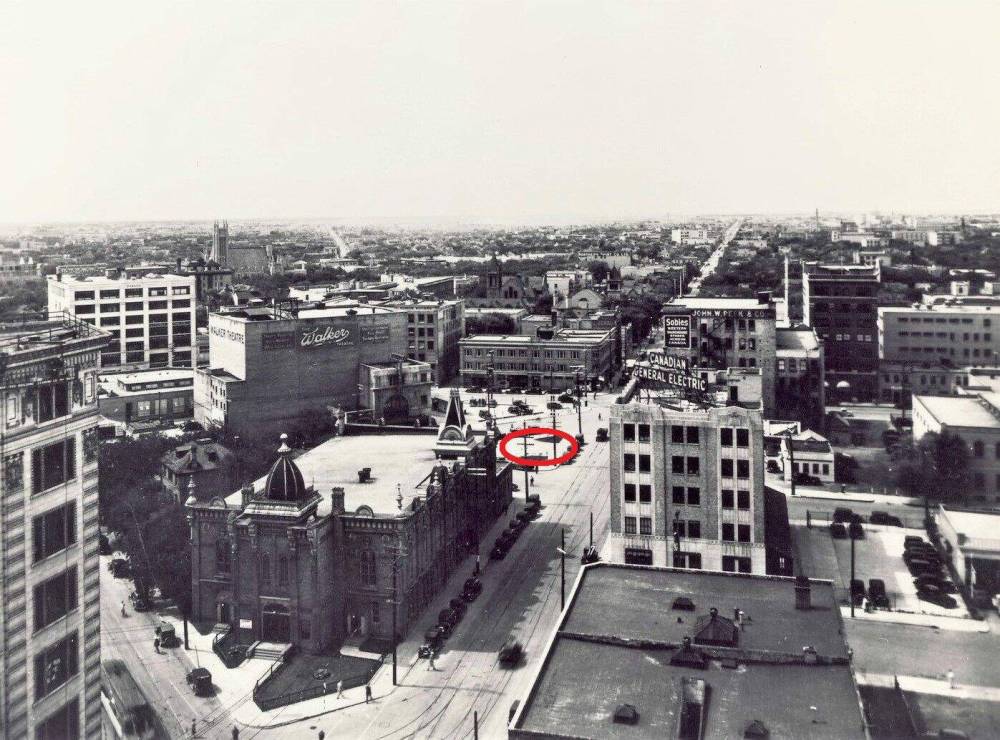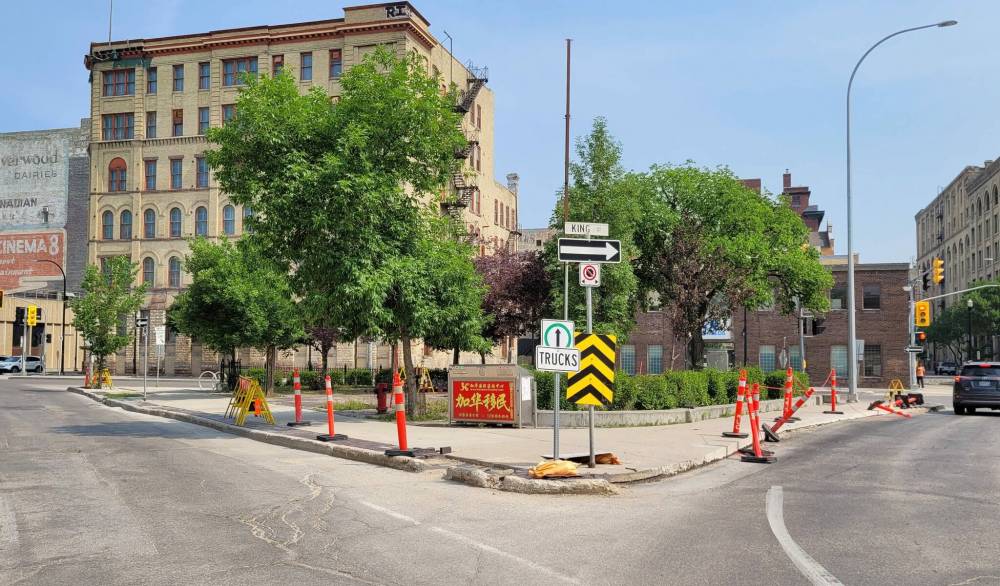Odeon Park to lose ‘island’ status
Advertisement
Hey there, time traveller!
This article was published 05/07/2023 (870 days ago), so information in it may no longer be current.
The roadworks currently underway on Smith Street near Notre Dame Avenue will drastically change a park that has stood at the intersection for nearly 90 years.
Known as Odeon Park due to its proximity to the Walker/Odeon/Burton Cummings Theatre, it measures just 335 square metres and acts as a traffic island, diverting vehicles travelling north from Smith Street onto either King Street or Notre Dame Avenue.
The park was once part of the Grace Methodist Church property. When the church was constructed in 1883 at the intersection of Ellice Avenue and Notre Dame Avenue, it prevented Arthur and King streets from connecting to Portage Avenue. This may not have seemed important in 1883, but as the Exchange District solidified its role as the city’s industrial heart and Portage Avenue became its major retail street this lack of street connection became a problem.

Archives of Manitoba, Peter McAdam Collection
Grace Church (bottom left) with Odeon Park (circled) behind it, as it looked in 1935.
In 1890, city council received the first of many annual petitions from business owners who complained that the lack of access forced the transportation of goods between the neighbourhoods onto Main Street which created severe traffic congestion.
The city’s solution was to ask the Grace Church board of trustees if it could purchase a sliver of land at the northwest corner of its property to allow Smith and King streets to connect. This would not interfere with the main church building but would mean the demolition of a house and a wood structure used for Sunday school.
Prominent local businessman and church trustee James Ashdown said in 1891 that by giving up the land, a “great injustice would be done to the church.” The city’s request was turned down and the stalemate lasted for 40 years.
Grace Church ran into financial difficulties in the 1920s. Its congregation was shrinking as members moved out to new suburban neighbourhoods and the aging building needed major repairs. It stopped paying taxes on the triangle of land, and it went up for tax sale in 1931. The city could have expropriated it but chose to pay market value to help the church retire some of its debts.
Winnipeg city council voted at its August 1936 meeting to spend $3,300 to connect Smith and King streets which would “leave a small island at the corner of Notre Dame and Smith” that was turned into a park.

Photo by Christian Cassidy
Odeon Park is about to undergo a major transformation.
The space got a $100,000 makeover in 1992 to make it “an oasis of trees and park benches” and it has received little attention since then.
The road construction now taking place will realign the traffic flow at Smith Street at Notre Dame Avenue so that just a sliver of land wide enough for a bus shelter will be needed at the fork in the road. Odeon Park will lose its island status as it will be merged with the sidewalk on the west side of Smith Street and nearly triple in size to 970 square metres. Greenspace will be restored to the land at a future date.




